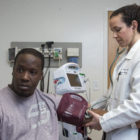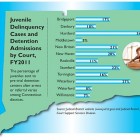Medicaid, ACA Uncertainty Threaten Success Of Ex-Offenders’ Health Care Programs
|
Since 2011, Connecticut has issued more than 39,000 new Medicaid cards to prisoners returning to communities, connecting them to health care services with the goal of keeping them healthy and out of prison. This initiative, which gives ex-offenders the opportunity to see a primary care physician on a regular basis and access critical mental health and drug-abuse treatment programs, exists because of the Affordable Care Act (ACA), and Medicaid pays most of the costs. Recidivism data show that the initiative is working, state officials say. Yearly, the Court Support Services Division (CSSD) refers approximately 20,000 adults on probation to various behavioral health programs and tracks them for 12 months. In 2016, CSSD reported that 23.1 percent of adults who completed their referral program were rearrested, a five-year low since CSSD started tracking in 2012.


